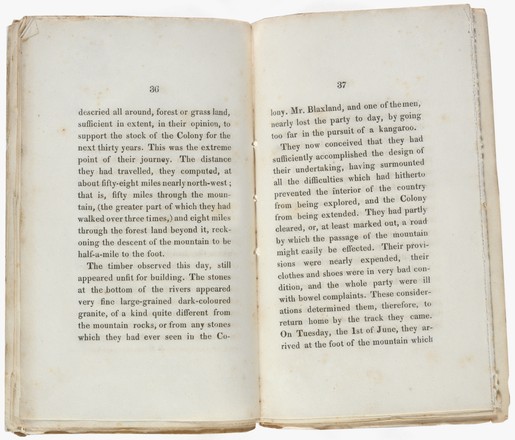
A journal of a tour of discovery across the Blue Mountains
1823
82/61, pp36-37
Published book: BJ Holdsworth, London
82/61, pp36-37
Published book: BJ Holdsworth, London
As a free settler of upper class English roots, Gregory Blaxland (1778 – 1853) was eager to make his mark and capitalise on the agricultural potential of the new colony.
Like many graziers, Blaxland had an expanding flock of livestock, and suitable land along the coast was becoming scarce. He believed the answer was to find a passage over the Blue Mountains and search for more farming land. In 1813, Blaxland joined other wealthy land owners William Lawson and William Wentworth on a quest to cross the great divide.
In this journal, Blaxland gives a brief account of the explorers’ passage across the Blue Mountains. He discusses their success of adopting the novel method of traversing the mountains by the ridges instead of looking for a route through the valleys. Blaxland also details how the group found their way across by Mount York, and then went on past Cox's River to a sugar loaf hill (later named Mount Blaxland). From its summit, the trio could see 'enough grass to support the stock of the colony for thirty years.’ *
Footnotes
Australia Dictionary of Biography http://adb.anu.edu.au/biography/blaxland-gregory-1795


 Back to list
Back to list